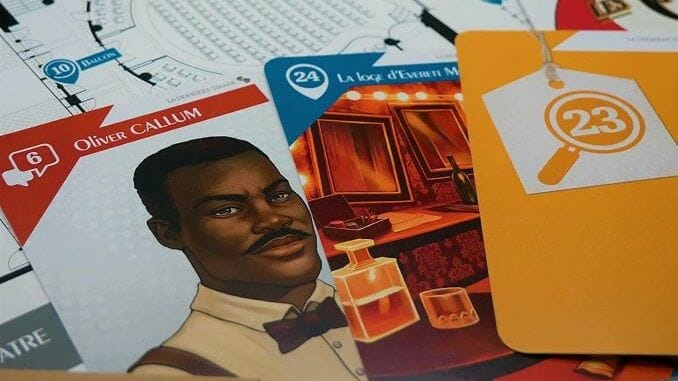It’s No Mystery What Does In the Crime-Solving Board Game Suspects: It’s the Mediocre Writing

Murder mysteries seem like great fodder for board games. So why is it so hard to translate the experience of a great mystery novel or film to the tabletop?
Suspects is the latest game to claim inspiration from the Queen of Mystery herself, Agatha Christie, who is generally acknowledged as the best-selling fiction writer in history. Rather than using any of her characters or stories, however, Suspects tries to mimic her style, in the settings of the murders, in the sorts of clues available to players, and in the text on the various cards that constitute each case. Imitating Christie’s style isn’t hard, but her genius lay in how she constructed her crimes, and had her detectives, mostly the fatuous Hercule Poirot (and his little grey cells) and the unassuming Miss Jane Marple, come to their conclusions. Suspects tries, but ultimately it falls short.
Suspects is a cooperative game that lists a playing time of 60-90 minutes, but it’s playable as a solo game, and the time it takes to complete one case really depends on the player count and, more so, how much time you spend discussing the clues. The base game comes with three cases, with another box including three more to follow, and each case is completely independent in components and content. There’s a murder, and you get a map and a deck of cards. You may only look at a card when you encounter its number somewhere—in the setup, on the map, or on another card. Each card can represent a location to search, which may give you two or three more card numbers; a person to interrogate, which can give you a whole bunch of additional numbers; or an object that might be a direct clue or something you use to identify a suspect. The card decks are all about 50-55 cards thick, and many cards are red herrings or just not useful (by design).
-

-

-

-

-

-

-

-

-

-

-

-

-

-

-

-

-

-

-

-

-

-

-

-

-

-

-

-

-

-

-

-

-

-

-

-

-

-

-

-









































